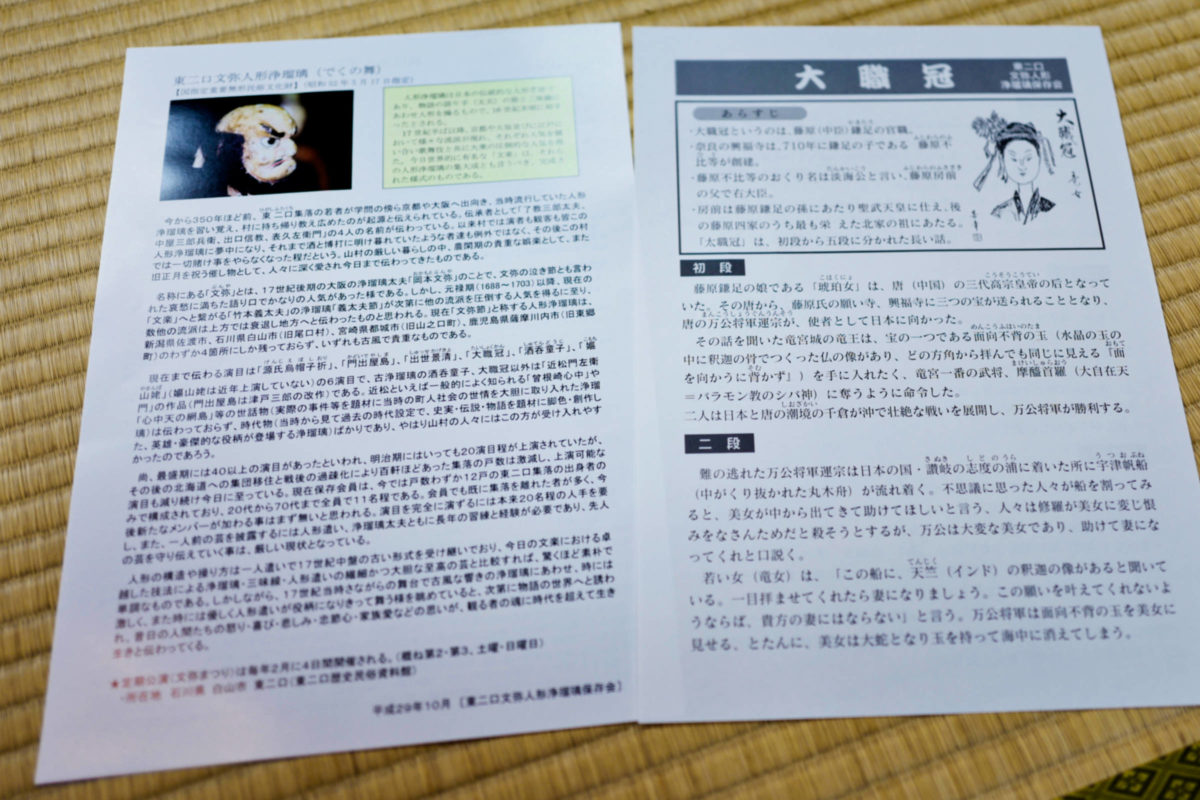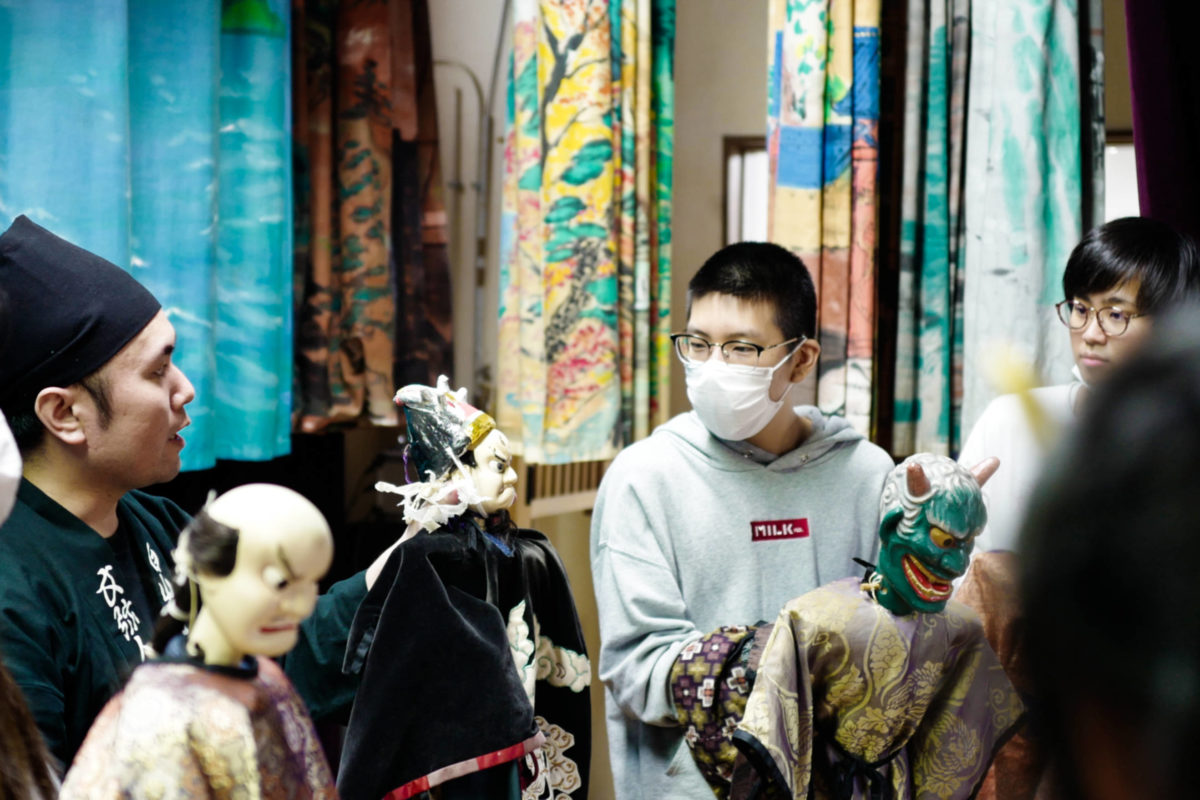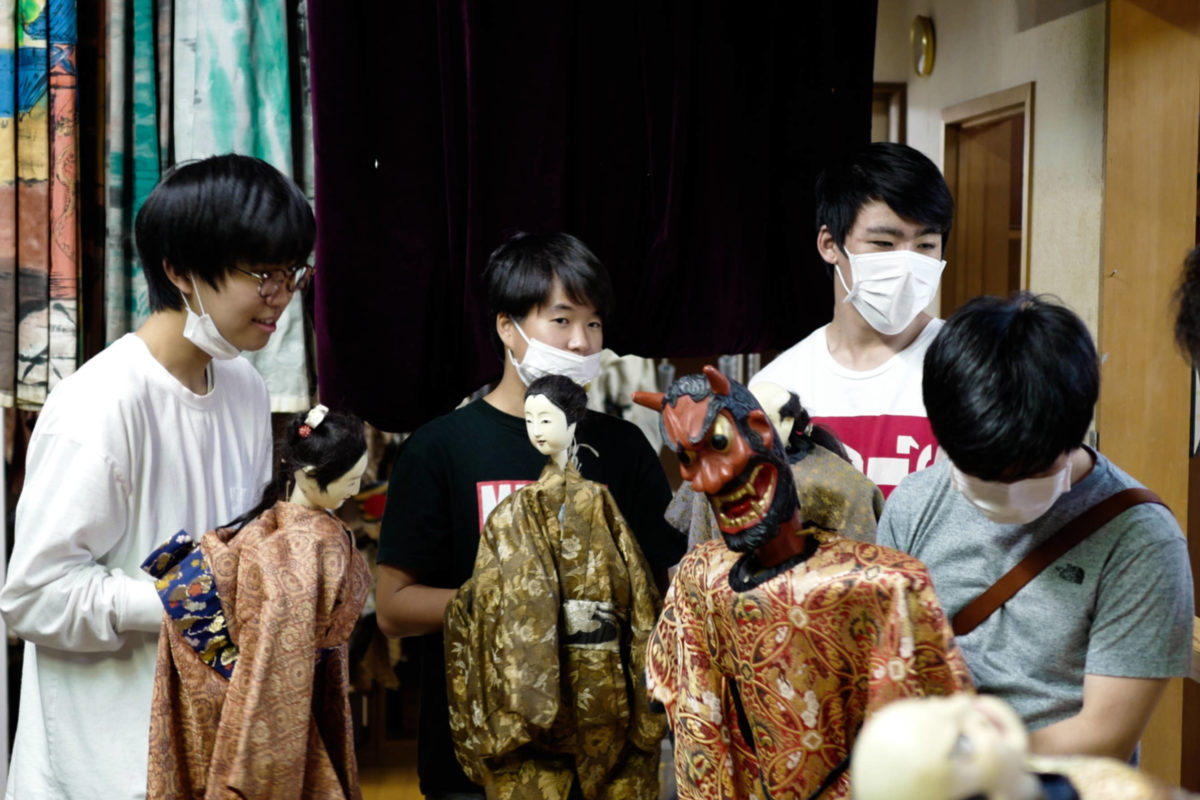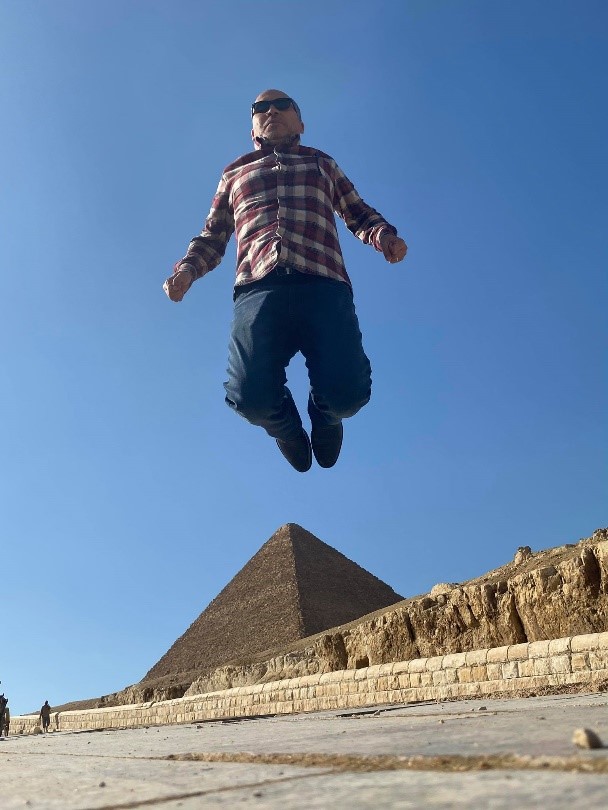 Hi! This is Jonathan, the camera man. I would like to post a quick journal to show the first-year students' biology presentations. First-year students were divided into pairs or groups of three and given the assignment to research and given a presentation about anything biology related. Every year, this is one of the larger hurdles students have to overcome. Why? Because it's all in English! Most of this year's first-year students are Japanese who only started learning in English this April. Also, presentations are a big part of ICT's curriculum. If there is one thing you get used to, it's giving presentations. One student told me that, including this bio presentation, he had five presentations this week. I will post the videos below. Remember, these are presentations of students that many of, went to Japanese junior high schools six months ago. Enjoy.
Hi! This is Jonathan, the camera man. I would like to post a quick journal to show the first-year students' biology presentations. First-year students were divided into pairs or groups of three and given the assignment to research and given a presentation about anything biology related. Every year, this is one of the larger hurdles students have to overcome. Why? Because it's all in English! Most of this year's first-year students are Japanese who only started learning in English this April. Also, presentations are a big part of ICT's curriculum. If there is one thing you get used to, it's giving presentations. One student told me that, including this bio presentation, he had five presentations this week. I will post the videos below. Remember, these are presentations of students that many of, went to Japanese junior high schools six months ago. Enjoy.
こんにちは!ジョナサンです。先日行われた1年生の生物のプレゼンテーションをジャーナルに載せたいと思います。毎年、1年生の生物の授業では好きな生物関連のテーマを選んで、リサーチした内容を発表する課題が出されます。これは国際高専のひとつの登竜門となっています。なぜかって?英語で行われるからです!ほとんどの1年生は日本の中学校を卒業して、人生で初めて英語で教育を受けています。当然、英語でプレゼンテーションをするのも初めてです。さらに、国際高専ではプレゼンテーションが頻繁に登場します。この発表の前に学生のひとりが「今週プレゼンが5個もある!」と嘆いていました。嫌でもプレゼン能力も伸ばされるのです。動画を下に載せましたので、ぜひご覧ください。発表する多くの学生が半年前までは日本の中学校で勉強していたことを考えると、短時間で大きく成長したなって感じました。
 Hello, it's Jonathan, the camera man. Today I would like to reflect on the second-year students' visit to see Bunya Ningyo-Joruri in Higashi-futakuchi. That was a lot Japanese so let me explain. Ningyo-Joruri is a Japanese traditional puppet show dating back to the Edo period. The name "Bunya" came from Okamoto Bunya, who was a Ningyo-Joruri reciter in the late 17th century. He was popular in Osaka for his melancholy narrative style, also referred to as "Naki-bushi (crying tone)." However, the Bunya style gradually subsided to the "Gidayuu-bushi" by Takemoto Gidayuu. Currently, Higashi-futakuchi is one of only four places that still practice "Bunya" Ningyo-Joruri. These places include Sado city (Niigata prefecture), Miyakonojo city (Miyazaki prefecture), and Satsumasendai city (Kagoshima prefecture).
Hello, it's Jonathan, the camera man. Today I would like to reflect on the second-year students' visit to see Bunya Ningyo-Joruri in Higashi-futakuchi. That was a lot Japanese so let me explain. Ningyo-Joruri is a Japanese traditional puppet show dating back to the Edo period. The name "Bunya" came from Okamoto Bunya, who was a Ningyo-Joruri reciter in the late 17th century. He was popular in Osaka for his melancholy narrative style, also referred to as "Naki-bushi (crying tone)." However, the Bunya style gradually subsided to the "Gidayuu-bushi" by Takemoto Gidayuu. Currently, Higashi-futakuchi is one of only four places that still practice "Bunya" Ningyo-Joruri. These places include Sado city (Niigata prefecture), Miyakonojo city (Miyazaki prefecture), and Satsumasendai city (Kagoshima prefecture).
It is said that a young scholar from Higashi-futakuchi learned Ningyo-joruri while studying in Kyoto and Osaka and brought the culture back to the village more than 350 years ago. The villagers instantly became hooked on this new entertainment. It was so popular that everyone quit gambling and drinking after this. Ningyo-joruri became a valuable source of distraction in the harsh winter months when the villagers could not farm and an amusement for the lunar New Year; and it has been passed down ever since.
The second year students visited Higashi-futakuchi, which is about 10 minutes by car from Hakusanroku Campus on June 25. First, Doishita-san and Yamaguchi-san gave an introduction of the history and current state of Bunya Ningyo-Joruri. Higashi-futakuchi village used to have more than one hundred houses and the villagers performed more than 40 stories. However, due to the mass migration to Hokkaido and young people leaving for the city, now there are only twelve houses and less than twenty people who continue the practice. Still, the village has preserved five stories and plays them each year in February.
After the introduction, students watched a shorten version of "Taishokkan." This story is about a shogun who fights a dragon lord of Ryugu castle to protect the gemstone "Menko-fuhai-no-tama". The dragon lord's warlord first tries to defeat the shogun in battle. When this fails, he next transforms into a beautiful maiden and tricks the shogun into giving him the gemstone. The ancient Japanese narrative was difficult to follow. However, the action and acting was surprisingly fascinating, and I could sense the students being drawn into the performance. I was especially impressed by the way the performer moving the maiden made the puppet sob when pleading for the treasure and the way the performers stamped the stage floor during the battle scene to create tension.
After the performance, students were allowed to come behind the stage and touch the various puppets. The puppets were heavier than I expected which increased my respect for the performers holding them sometimes for multiple hours for a single show. Yamaguchi-san explained how to move the puppets and that the key is to hold the puppet up to your face so that the audience can only see the puppet. Student asked questions about how the puppets were made, the beautifully painted paper lamps in the hall, and the music played during the scene.
The second-year students are given the task of choosing a problem in the local Hakusanroku community in the Engineering Design class. After this visit to Higashi-futakuchi, three students decided to focus on the revitalization of Ningyo-joruri. The group will work together to solve problems such as lack of performers/successors, and difficulty to understand the storyline due to the old Japanese dialect next semester. I will make sure to keep you updated so stay tune.
Jonathan
こんにちは、カメラマンのジョナサンです!今日は2年生の東二口の文弥人形浄瑠璃見学について振り返りたいと思います。少し解説します。人形浄瑠璃は江戸時代から続く日本の伝統的な人形芝居です。「文弥」とは語り手の岡本文弥のことで、「泣き節」と呼ばれる哀愁に満ちた語り口が17世紀後期の大阪で人気でした。しかし、竹本義太夫節の「義太夫節」の人気が増すにつれ、他の流派は上方で衰退し、地方へ伝わったと言われています。現在「文弥節」と呼ばれる人形浄瑠璃は石川県白山市(旧尾口村)、新潟県佐渡市、宮崎県都城市(旧山之口町)、鹿児島県薩摩川内市(旧東郷町)の4か所でしか残っていません。
東二口の人形浄瑠璃は今から350年ほど前、東二口集落の若者が学問のため京都や大阪へ出向いた際、当時流行していたものを習って、村に持ち帰ったのが広まったと伝えられています。村の者は人形浄瑠璃に夢中になり、それまで酒と博打に明け暮れていたような者も一切賭け事をやらなくなった程だと言われています。農作業ができない山村の厳しい冬の貴重な娯楽として、また旧正月を祝う催し物として愛され続けて今日まで伝わってきました。
2年生が訪れた東二口は白山麓キャンパスから車で約10分の距離にあります。はじめに保存会員の土居下さんと山口さんが文弥人形浄瑠璃の歴史と現状について話をしてくれました。東二口集落は以前は100軒以上の家があり、最盛期には40以上の演目が上演されていました。しかし、北海道への集団移住と戦後の過疎化によって、現在はわずか12軒まで減少し、会員も11名ほどになってしまいました。会員でも集落を離れた者が多いですが、5つの演目を毎年2月に上演して守り伝えています。
紹介のあと、学生は演目「大職冠」の短縮版を見せていただきました。これは竜宮の武将、摩醯修羅(まけいすらおう)が唐の万公将軍運宗(まんこうしょうぐんうんそう)から面向不背の玉と呼ばれる宝玉を奪おうとする場面でした。最初、竜宮の武将は武力で宝玉を奪おうとしますが、運宗に返り討ちに遭います。しかし、今度は美女に化けて運宗から宝玉をだまし取り、大蛇に変身して海に逃れます。語り手の古い日本語は難解でしたが、演者の演技と動きの迫力は想像以上で、学生たちが引き込まれるのを感じました。特に美女の人形を操り、袖を濡らして助けを乞う演技と、戦闘の迫力を増すために舞台を足で踏み叩く演技は圧巻でした。
演目が終わったあと、会員たちが学生達を舞台の上に招いて、たくさんある人形を触らせてくれました。人形は思った以上に重く、中には5時間以上も続く演目を通して操る凄さを感じました。山口さんによると人形を操るコツは顔の前に人形を構え、観客に演者の顔を見せないことだそうです。学生たちは人形の作り方、ホールに飾られている絵が描かれている提灯のこと、演目中に鳴っている三味線の音楽について質問をしました。
2年生はエンジニアリングデザインという授業で白山麓地域の課題をひとつ選び、課題解決をします。東二口を訪ねた数日後、3人の学生が人形浄瑠璃の再興をテーマにすることを選びました。このグループは後学期、文弥人形浄瑠璃が抱える演者・後継者不足、難解な古い日本語などの課題に着目して創造活動を行います。プロジェクトが進みましたら、すぐにお知らせしたいと思います。
ジョナサン
 国際理工学科2年 加藤大虎です。
国際理工学科2年 加藤大虎です。
本校は月に一度、自由外出できる土日があります。県内出身の学生は帰省したり、県外や海外出身の学生は金沢に行ったり、それぞれ思うままに貴重な時間を過ごします。今回はその日に皆が良く利用する金沢への外出について紹介します。
待ちに待った久しぶりの外出、6月初旬に3ヶ月ぶりに金沢市街に行きました。 (通常であれば、1か月に一度金沢へいけますが今回はコロナ渦で自粛期間があったため3ケ月ぶりとなりました) 朝、バスに集合する時間は9時で、学校から1時間ほどかけて金沢駅に向かいます。バスの中のすごし方は人それぞれですが、僕は友達としりとりをしたり、山中の景色をボーっと眺めたりします。猿がいたり、稀に鹿やノウサギもいたりして、これを見るのも道中の楽しみの一つです。

到着してからは各自17時まで自由です。目的は様々で、家族と会う人や、買い物、リフレッシュの為、散髪、映画鑑賞や普段学食では食べられないものを食べるなど、人それぞれでした。僕は大好きな映画の「天気の子」と「君の名は」が上映されていたので、同級生と後輩と一緒に2作品を観ました。お昼には久しぶりにお寿司を食べ、日用品の買い物をしました。
大好きな2つの映画を見て感動、美味しいお寿司にまた感動、後は趣味や日用品などを買って最高の金沢外出になりました。コロナウイルスの影響で長らく寮から出ることができていなかったので、久しぶりに外へ行きリフレッシュができて良かったです。しかし、買い物の予定を立てずに行ってしまい時間をロスしたので、次行くときはメモしてから行きます笑
豆情報ですが、瀬女より朝6時台の市営のバスがあるので、そちらを利用すれば朝から金沢を満喫できますよ。そして兼六園や近江市場、鼓門等、観光地をめぐるのもおススメです。
寮生活をすると、外出して買い物や外食をしたり、映画をみたり今まで当たり前に出来ていたことがとても貴重な体験になります。いままでの価値観が変わり少しの事に感謝の気持ちが沸くようになりました。これは寮生活を過ごすからこそ気づいた事だと思います。
それでは、また次のジャーナルでお会いしましょう〜😁

Hi! This is Daiko Kato, I am a second-year student of International College of Technology.
Once a month in this school, we have weekends where students can go out freely. Students from within the prefecture can go back home, while those from outside the prefectures or overseas can go to Kanazawa, so they can do whatever they want and we spend precious time there. In this article, I would like to introduce an outing to Kanazawa that we use often that day.
I went to Kanazawa city for the first time in three months in early June. (Normally, I would be able to visit Kanazawa once a month, but this time I had to refrain from going there due to the corona vortex, so it was the first time in three months.) We met on the bus at 9:00 am and head to Kanazawa station, that was about an hour away from school. Spending time on the bus was different for each person, so I spent my time chatting with my friends, watching the mountains dully, and so on. There are some monkeys sometimes around there, and in rare cases, there are deer, rabbits, and bears. This is one of the fun things on the way.
We are free to go on your own until 5 pm from when we arrived. We can meet our family, go shopping, refresh ourselves, get a haircut, watch a movie, or just enjoy a meal in the restaurants. It was different for each of us, such as eating what we couldn't eat in ICT. My two favorite movies, "Weathering With You" and "Your Name." were showing, so I watched both movies with my friends! At lunch, we had sushi for the first time in a long time and did some shopping for daily necessaries.
I watched my two favorite movies, then I was impressed and I was impressed by the delicious sushi again. The rest of the time I spent on my hobbies and shopping for daily necessities, making it the best Kanazawa outing I've ever had. It was nice to be able to go outside after a long time and get refreshed because I couldn't leave the dormitory for a long time because of the coronavirus. However, I lost my time because I didn't make any plans for my shopping, so next time I go, I'll make a timetable before I go. lol
It is a piece of minor information, but there is a city bus of 6:30 a.m. from Sena, so if you use it, you can fully enjoy Kanazawa from the early morning. I also recommend visiting Kenrokuen, Omityo Market, Tsudumimon, and other tourist spots.
When I live in the dormitory, it would be a very valuable experience to be able to do it until now, for example, go out for shopping, eating out, watching movies, and other things. My sense of value has changed and I started to thank for the little things. I think this is something I've realized because I've spent time in the dormitory.
I'll see you in the next journal. 😁
 The Writers’ Celebration is an opportunity for students to showcase their writing to students, teachers, and staff in the ICT Hakusanroku community. First and second year students in World Literature and English Expressions displayed various writing pieces--name affirmations, short stories, essays, etc.
The Writers’ Celebration is an opportunity for students to showcase their writing to students, teachers, and staff in the ICT Hakusanroku community. First and second year students in World Literature and English Expressions displayed various writing pieces--name affirmations, short stories, essays, etc.

We held Writers’ Celebration last year and it was beneficial for both students and teachers. Students who displayed pieces received feedback and compliments, as well as suggestions for improving their writing. Other students got to read each other’s writing and practice giving feedback and comments. Teachers had the chance to see what students were writing about, how they expressed themselves, and get to know the students a little better through their writing.

The night before the start of the celebration, many students, even those who were not displaying writing this time, stayed in the library until curfew to help set up and decorate. Even before the celebration started, there was already a festive atmosphere. Students were drawing characters, making sentences with word magnets, and putting up balloons and decorative washi tape. The students had to be chased away to make it to curfew on time.

During the Writers’ Celebration, students and teachers gathered to read the writing pieces, eat snacks, and talk and laugh together. Chips and salsa were provided and Mr. B made a special bacon cheese dip that was a huge hit with all the students. Each student’s board had a comment sheet where students and teachers could give feedback and encouragement.
Although students can often view writing as a tedious or boring part of school, the Writers’ Celebration gives our students a chance to be proud of their work and builds positivity in our community. For teachers, we get the chance to get to know our students more and reading their honest opinions and views in their writing is a delight.
Anne Isobel Tan
Writers' Celebrationは学生たちが自分の書いた作品を白山麓キャンパスの他の学生と教職員に披露できるイベントです。世界文学と英語表現を受講している1、2年生は様々な作品(Name Affirmations、短編小説、エッセイ等)でその才能を発揮しました。
去年開催したWriters' Celebrationは学生にとっても先生にとっても有益なものでした。作品を掲示した学生はフィードバックや称賛の言葉、アドバイスを貰いました。他の学生は他人の作品を読む機会と、フィードバックと称賛を与える側を体験できました。先生たちは学生がどんなことについて書いているのか、どんな風に自身を表現するのかを見て、その作品を通して学生のことをもっとよく知ることができました。
前夜は多くの学生(作品を掲示しない学生も)消灯時間まで図書室に残って飾り付けをしました。ですので、開始前からすでに会場は盛り上がりを見せていました。学生たちはキャラクターを描いたり、単語のマグネットで文章を作ったり、風船やマスキングテープで飾り付けをしたりしていました。消灯時間になっても帰らないので、追い出さないといけなかったくらいです。
Writers' Celebration開催中は学生と先生が作品を読むために集まって、スナックを食べたり、楽しくお話したりしました。チップスとサルサソースが登場し、Mr.B特製のベーコンチーズディップは学生たちに大ウケでした。それぞれの学生のボードにはコメントシートが用意されて、他の学生や先生がフィードバックや称賛の言葉を書けるようになっていました。ライティングの課題は地味でつまらない作業というイメージもありますが、Writers' Celebrationでは学生が自ら書いた作品を自信もって披露しますので、クラスの雰囲気も良くなります。先生にとっても学生が普段思っていることや、率直な意見を読むことが出来て大変嬉しいです。
アン・イソベル・タン
 Hello everyone! Last March, I went to Egypt with my family to visit our relatives and enjoy the sunny warm and dry weather. I used to go there in summer, but this time we decided to spend the spring vacation as it becomes longer than the summer one. When we started our trip, COVID-19 was not declared as pandemic yet. So we could enjoy going out and having tours in many different places at least in the first 10 days. I live in Giza, very near from the pyramids. It takes 5 min by car to get to there from my place. So, on one of the sunny days we visited Giza pyramids to show our children the history of their forefathers and how astonishing the pyramids and Sphinx are. My children were so impressed and they kept asking how those people could make such great buildings and how they could lift such huge blocks more than 5000 years ago without the technology that we have nowadays. The answers of these questions are still mysterious and Egyptologists are trying to demystify that. As an engineer and a math teacher, I utilized that chance to explain to my kids how the ancient Egyptians invented Trigonometry to adjust the pyramids angles, side lengths and the inclination of the surfaces. After spending nice time and taking many pictures at the place, we all went back proud of our ancestors.
Hello everyone! Last March, I went to Egypt with my family to visit our relatives and enjoy the sunny warm and dry weather. I used to go there in summer, but this time we decided to spend the spring vacation as it becomes longer than the summer one. When we started our trip, COVID-19 was not declared as pandemic yet. So we could enjoy going out and having tours in many different places at least in the first 10 days. I live in Giza, very near from the pyramids. It takes 5 min by car to get to there from my place. So, on one of the sunny days we visited Giza pyramids to show our children the history of their forefathers and how astonishing the pyramids and Sphinx are. My children were so impressed and they kept asking how those people could make such great buildings and how they could lift such huge blocks more than 5000 years ago without the technology that we have nowadays. The answers of these questions are still mysterious and Egyptologists are trying to demystify that. As an engineer and a math teacher, I utilized that chance to explain to my kids how the ancient Egyptians invented Trigonometry to adjust the pyramids angles, side lengths and the inclination of the surfaces. After spending nice time and taking many pictures at the place, we all went back proud of our ancestors.
Alaa Hussien
皆さん、ごきげんよう!去る3月、家族と一緒にエジプトにいる親戚を訪ねて、さわやかな暖かい天候を楽しんできました。いつもは夏休みに行くのですが、最近は春休みのほうが長いので今年はこの時期に行くことにしました。出発した時は新型コロナウィルスがパンデミックとして宣言される前で、最初の10日間は様々な場所へ出かけたり、ツアーに参加したりすることができました。私の家はピラミッドの近くのギザにあります。自動車で5分の距離です。せっかくだったので、子供たちに祖先の偉功とピラミッドとスフィンクスの偉大さを見せるべくギザのピラミッドを訪れました。子供たちは驚愕のあまり、5000年以上前の技術でどうやってこんな大きい建物を作ることができたのか、どうやってこんな重たいブロックを持ち上げることができたのか、質問が絶えませんでした。この問いの答えはいまだにエジプト学者が解き明かせていない謎です。エンジニア、そして数学教師として、この機会を逃すまいと子供たちに古代エジプト人が三角法を使ってピラミッドの角度、横の長さ、そして表面の角度を調節したことを説明しました。楽しい時間を過ごして写真を撮ったあとは祖先への誇りを胸に帰宅しました。
アラー・ホセイン




















